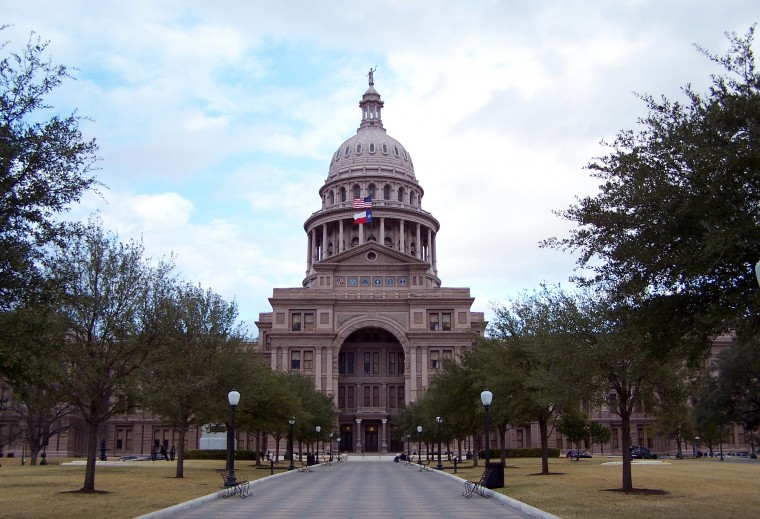State aid for private schools may get cut
The Texas budget shortfall has the potential to affect more than a thousand St. Edward’s University students by cutting state financial aid for private universities.
The Texas Tuition Equalization Grant, or TEG, which sets aside money specifically for students wanting to attend private universities, was given to 1,109 students at St. Edward’s this year, and a group of those students went to the Capitol on March 2 to lobby for the grant to continue getting government funding, according to Associate Dean of Students Nicole Treviño.
Treviño, as campus coordinator for the trip to the Capitol, said that the 14 students who spoke to the staff members of Texas legislators have all received TEG dollars.
“The legislature is in session and is in the process of approving the budget for the 2011-2012 year,” Treviño said in an email. “Cuts to education are up for serious consideration, and we want to drive home the importance of TEG dollars for our students.”
One of these students, junior Rocio Avila, does not receive any financial assistance from her parents after her mom lost her job during her sophomore year of college, but she relies on financial aid – loans, scholarships, and the TEG – as well as the support of two on-campus jobs to go to college. Without the aid, she would be unable to continue attending.
“I don’t think I’d be here at St. Edward’s without the grant,” Avila said.
Her resident assistant position in the on-campus apartments provides her with free room and board and a meal plan. She is also a student worker for the alumni and parent programs in the Advancement Office.
She said the grant was not a major part of the financial aid she received, but it still contributed.
Junior Jake Droutsas, another student who went to the Capitol, also relies on the TEG. He said that it supports him substantially enough to cover tuition without his having to take out major loans.
“However, without the TEG, it looks like I’ll have to take out bigger loans than just the subsidized Stafford loans,” Droutsas said in an email.
Because the TEG is a grant, students do not have to pay back any of the money they receive from it, making it different from a loan, which does have to be repaid over a period of time, sometimes with interest if it’s unsubsidized. If Droutsas takes out more loans, he will have an increased debt once he graduates to pay them back.
Both Avila and Droutsas had been to the Capitol before, but not in that context. They went to the offices of some of the legislators’ staff members and discussed, sometimes in-depth, sometimes more briefly, their financial situations and their desire to keep funding for the grant, which has existed since 1971.
All of the staff members they talked to were extremely supportive and wanted to continue providing state monetary support to students attending private universities, Avila said.
Droutsas thought that talking to some staff members or legislators who were more on the fence about keeping the grant would have been more effective. He said that they went to the Capitol on Texas’ Independence Day, and all of the legislators were in session.
The reason St. Edward’s students visited the Capitol on that day was because the Independent Colleges and Universities of Texas, a nonprofit association that voices the concerns and interests of private universities to the government, organizes advocacy days for these schools to go to the Capitol. St. Edward’s day fell on March 2, Treviño said.
One of the Capitol staff members told Avila that potentially 40 percent of financial aid from the state could be cut as a result of the budget crisis. Texas also provides a grant to students attending public schools, called the Texas Grant, which may be affected as well.
In 2010, the funds appropriated to the TEG only met 54 percent of the need, according to a fact sheet Treviño and the students provided the legislators and staff members during their Capitol trip. The inability to cover all students in need of the aid is partly because of how much money is allocated to private universities.
“[T]he maximum grant amount for TEG is determined as a percentage of the state’s subsidy for attending a state university,” the fact sheet said.
Besides the students’ trip to the Capitol, there are other options for letting legislators know the importance of the TEG. One of them is contacting a legislator, as President George Martin noted during his spring president’s meeting on Feb. 23 and in a blog entry, dated Feb. 24, in St. Edward’s Celebrating 125 Years website.
Martin also said at the meeting that St. Edward’s would replace any TEG funding lost next year if the funding is cut. He did not specify how, and he did not respond in time to an email asking for comment.
According to the staff members at the Capitol, Avila said, the decision about whether the TEG will remain intact won’t be announced until May, when the legislative session is over.







